王凡
1964年出生于河南,现为《新财富》杂志社摄影师。
展览:
2006年,摄影作品《老板系列》参加连州国际摄影节。
2006年,摄影作品《流水线上的打工妹》参加首届“吾城吾乡”摄影展。
2004年,摄影作品《流水年华》参加平遥国际摄影节。
1995年,摄影作品《工业场景》参加“95中原”摄影展。
获奖:
1992年,摄影作品《灰色管道》获《中国首届探索杯》摄影大赛银奖。
出版:
1993年,摄影作品《灰色管道》发表于《中国摄影》杂志。
1992年,摄影作品《灰色管道》发表于《现代摄影》杂志。
1991年,摄影作品《货场》发表于《摄影》杂志。
1990年,摄影作品《模特》发表于《现代摄影》杂志。
1989年,摄影作品《王府井》发表于《中国摄影家》杂志。
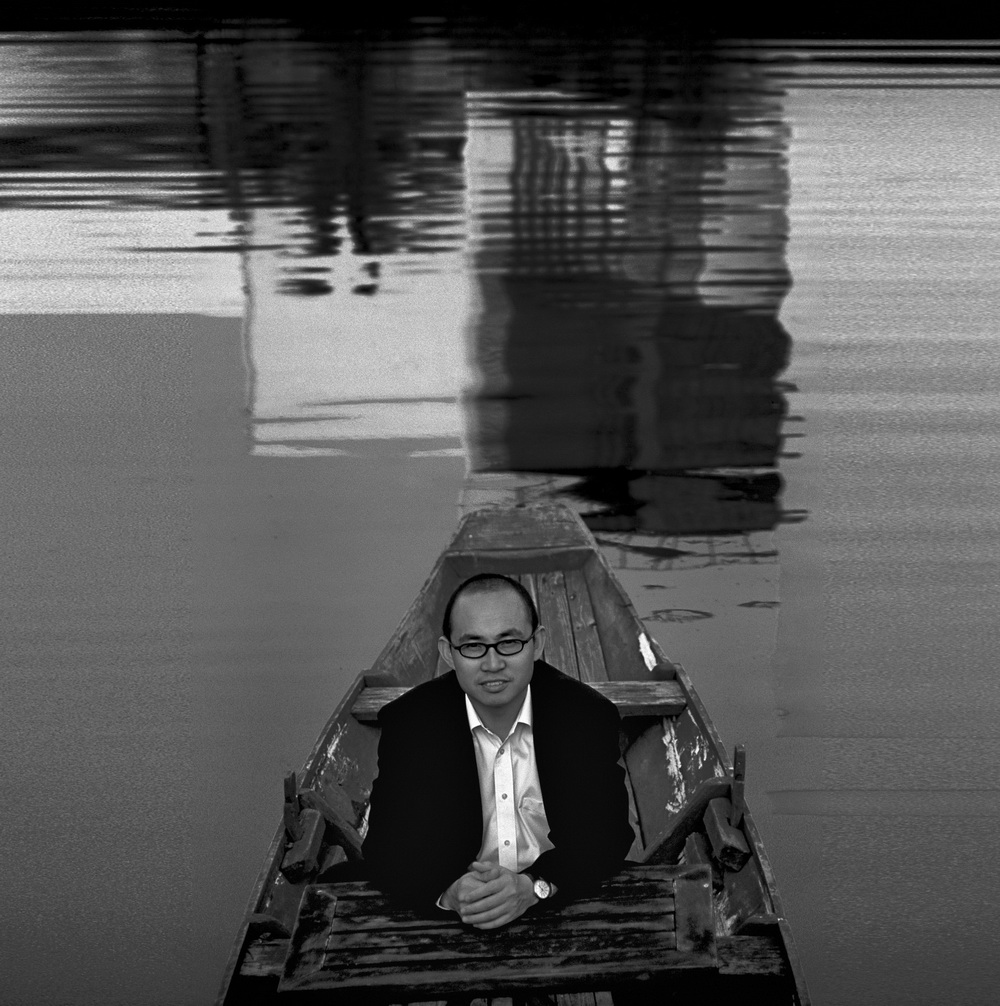
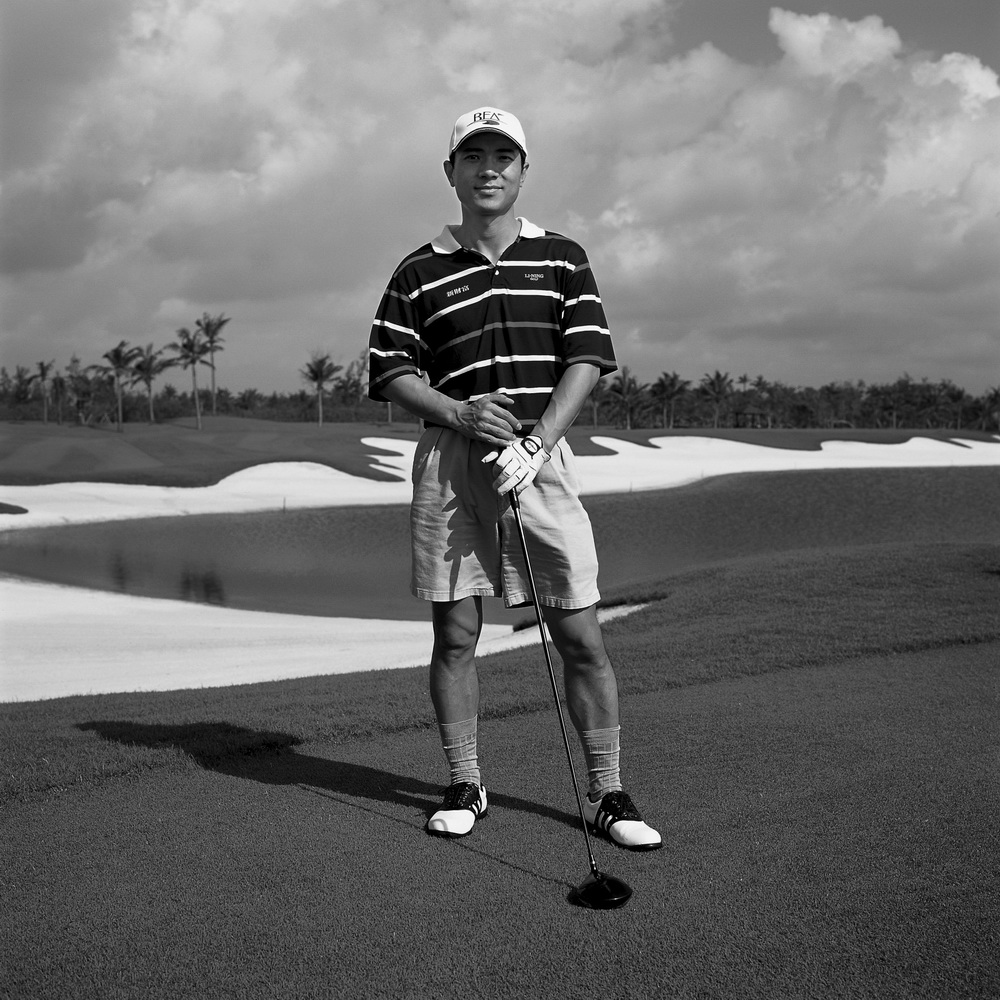
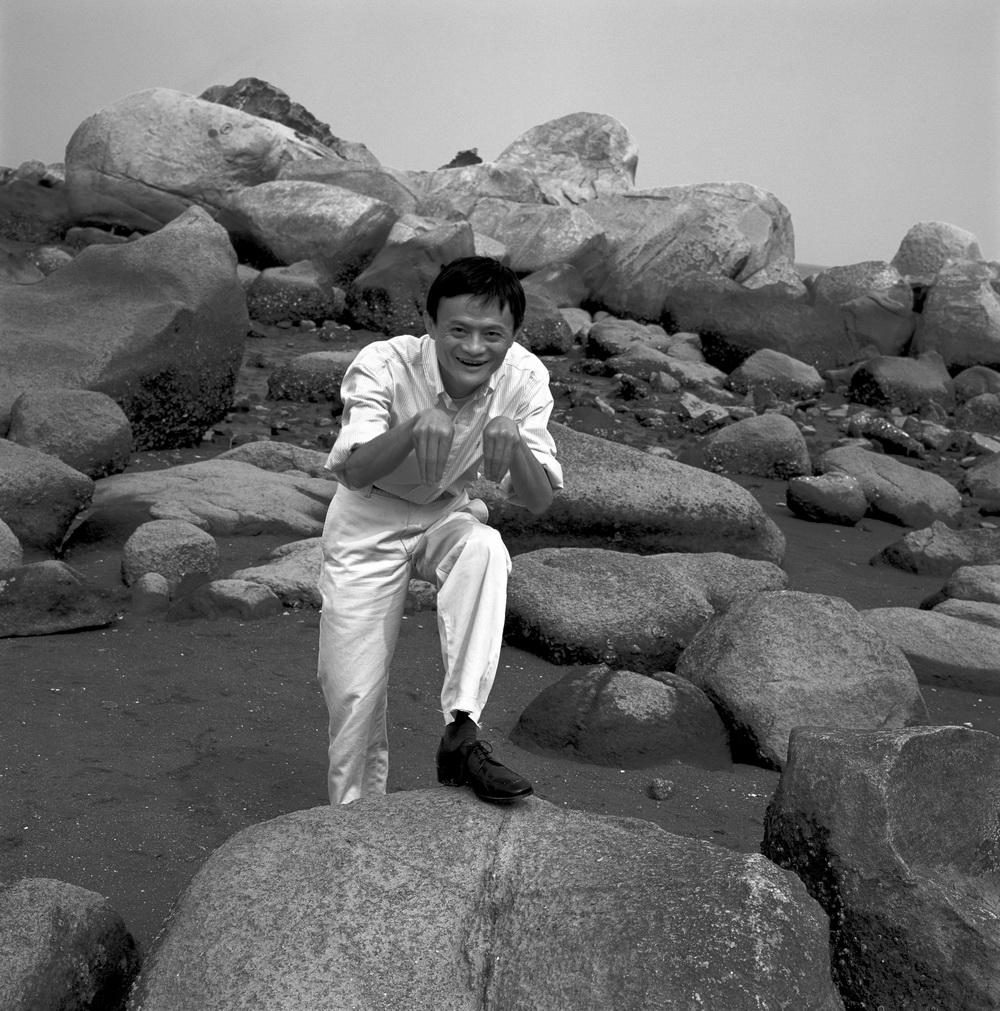
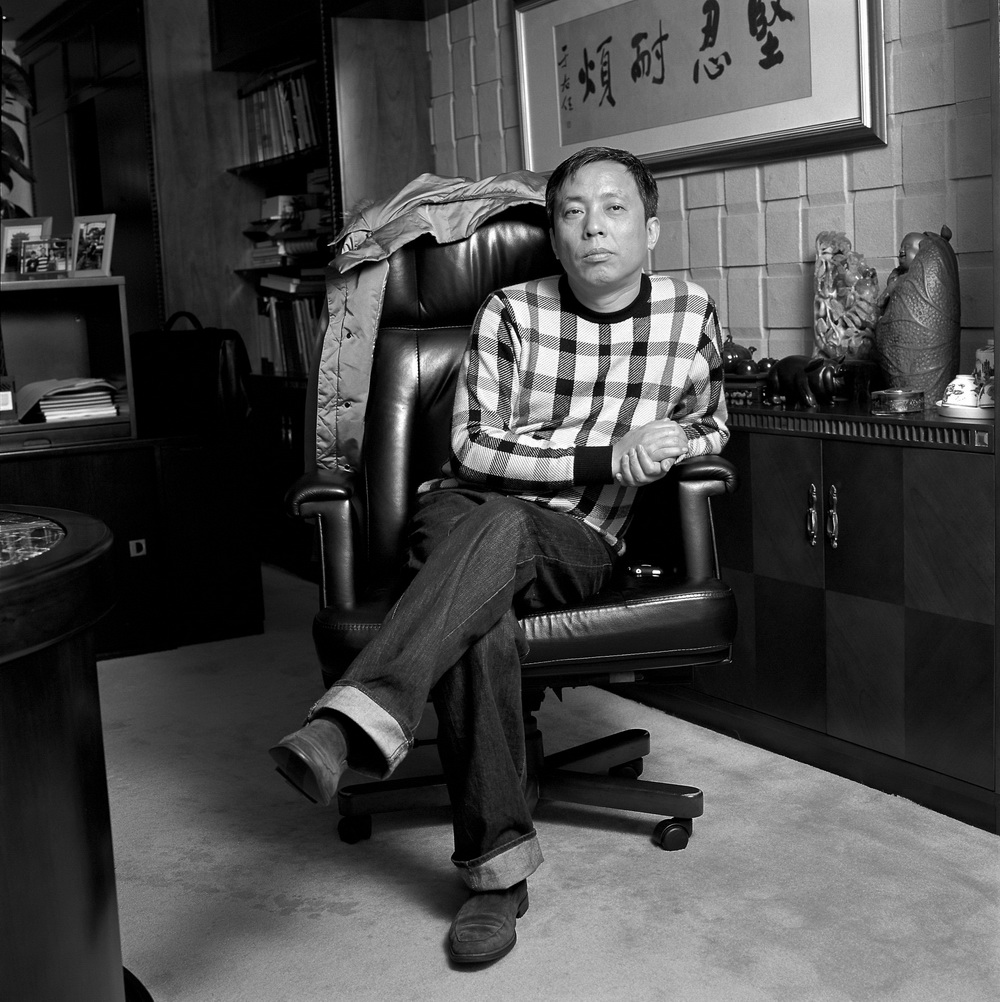
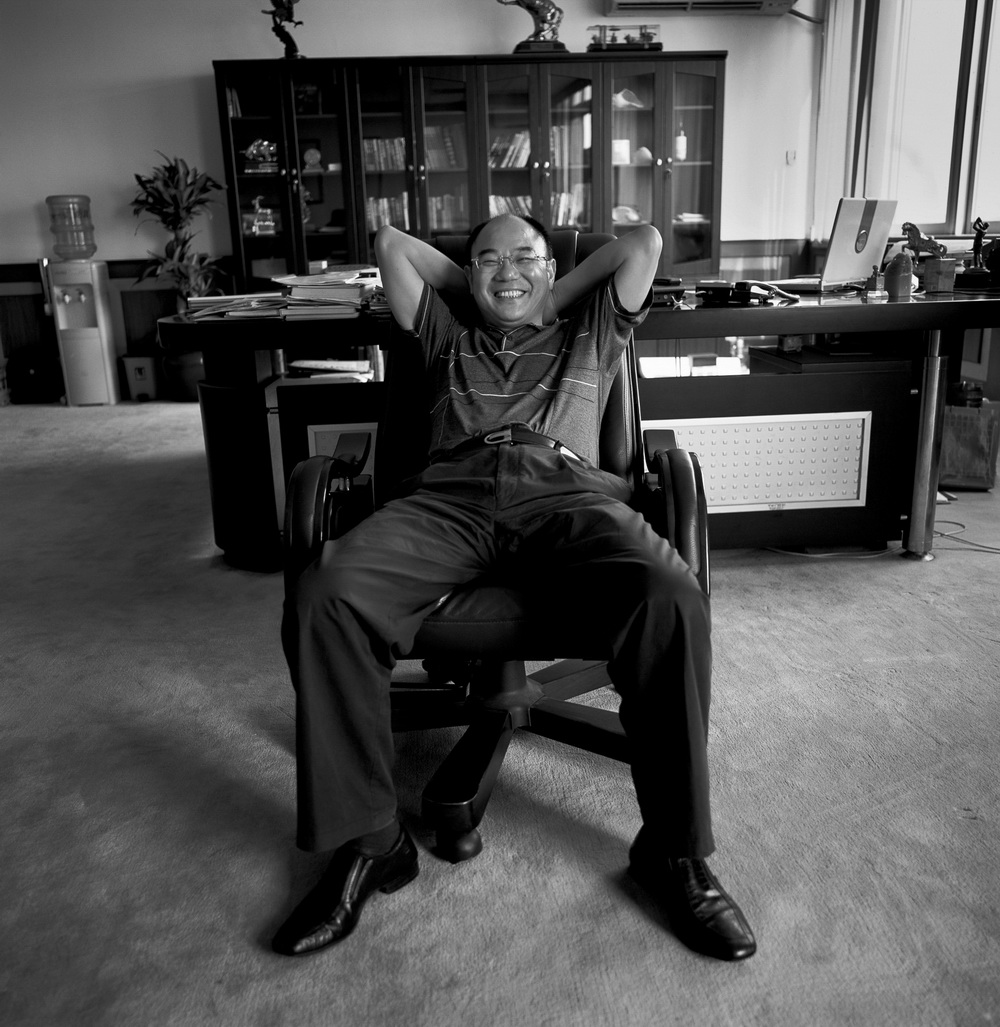
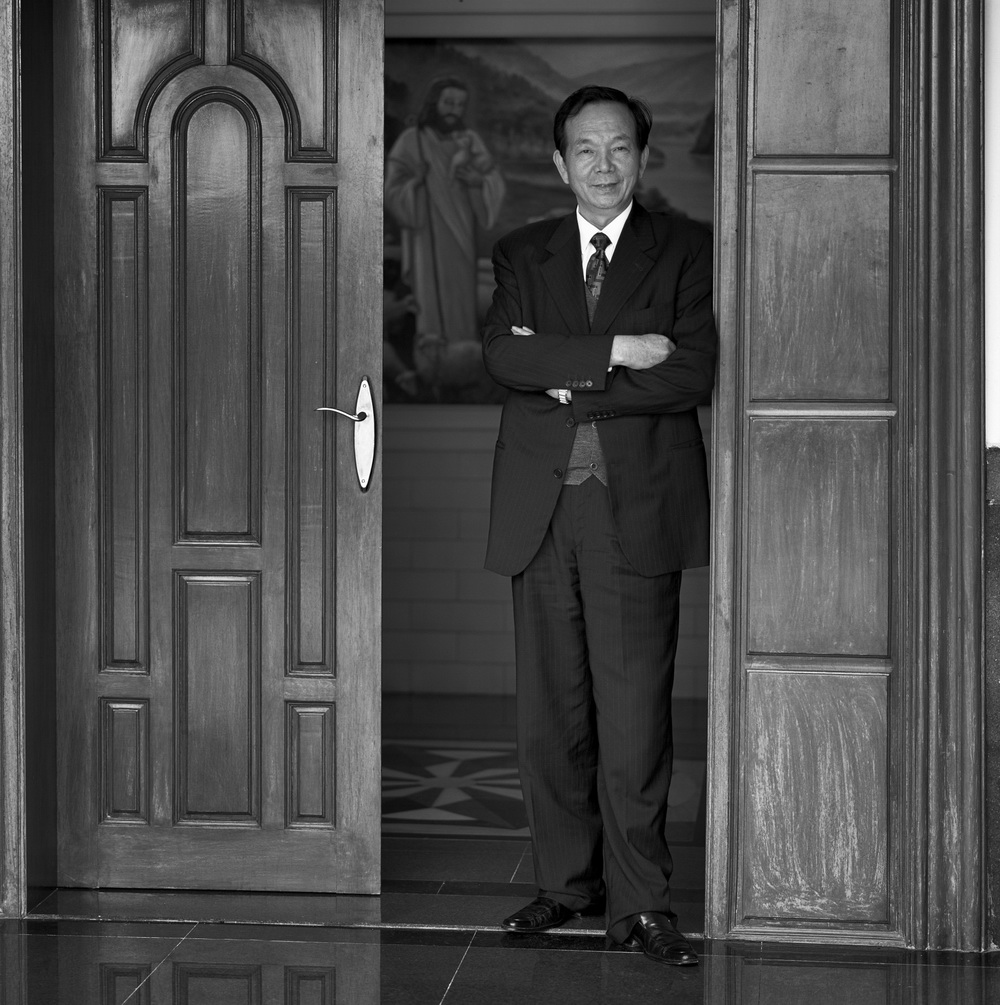
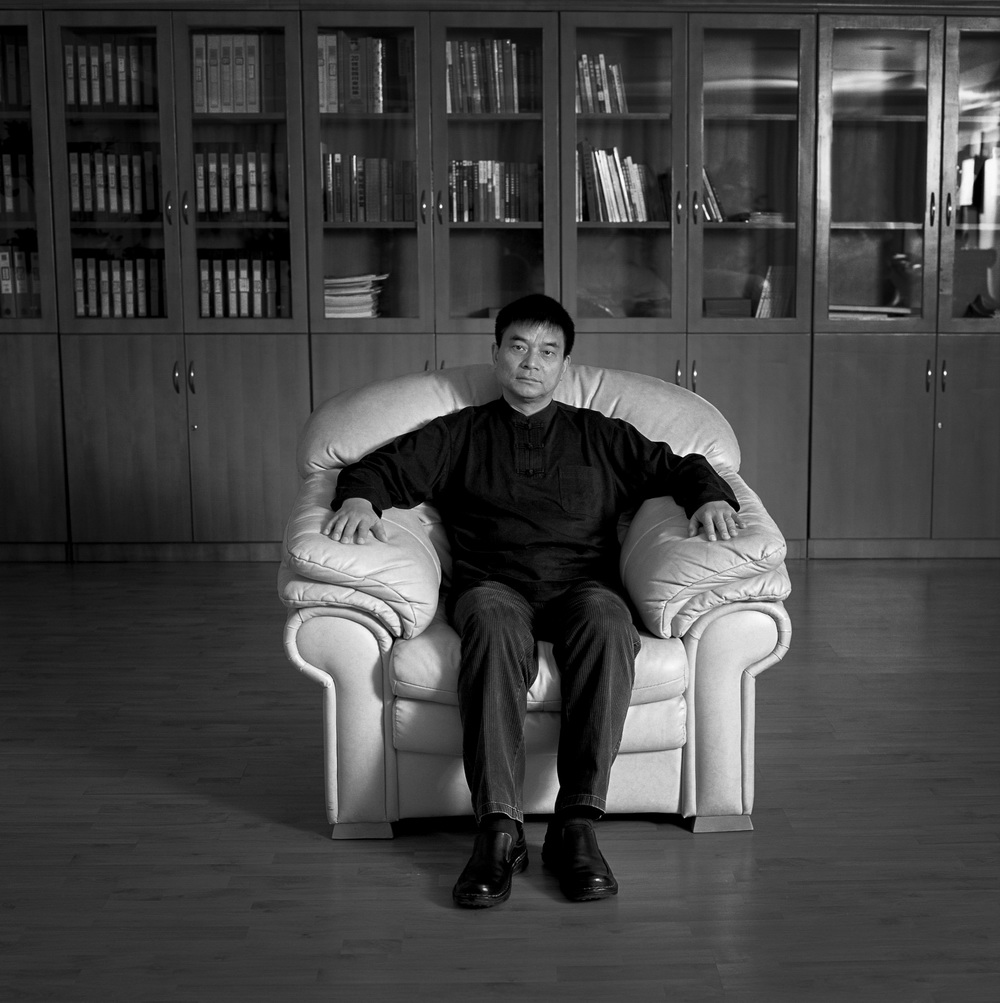
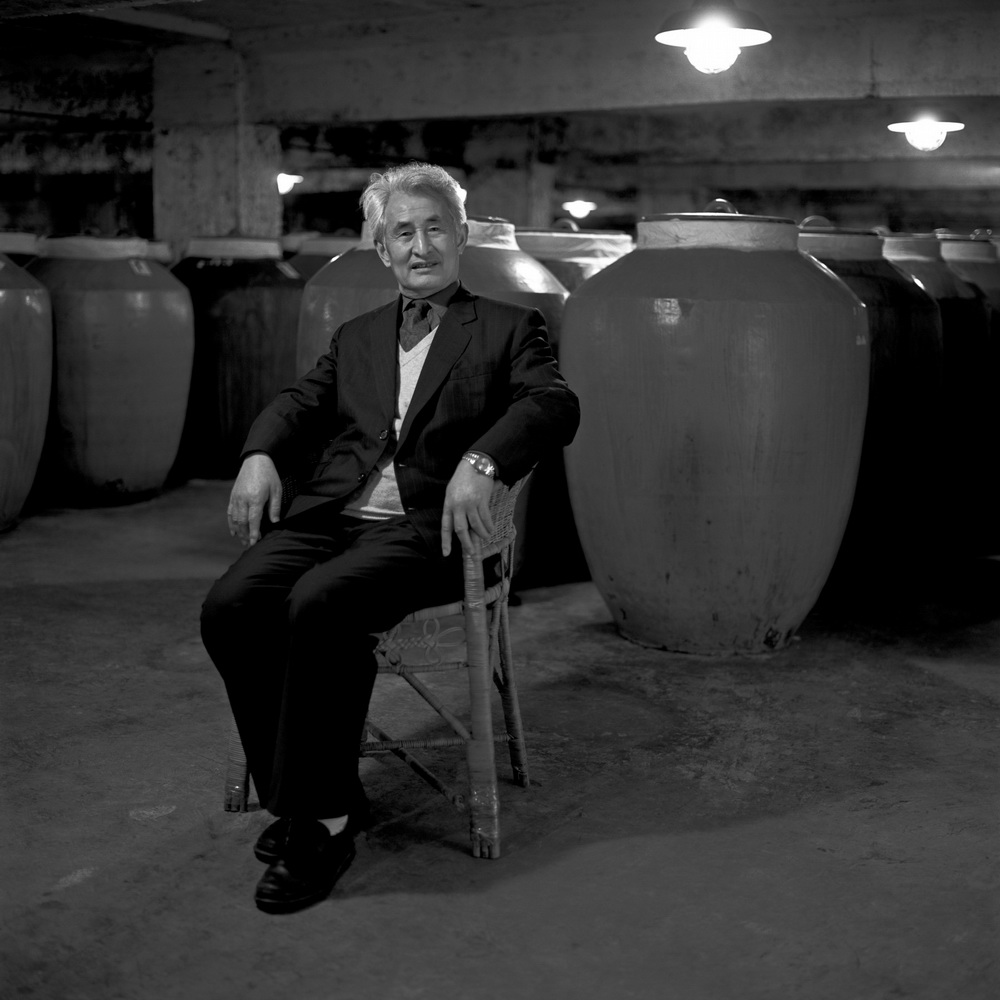
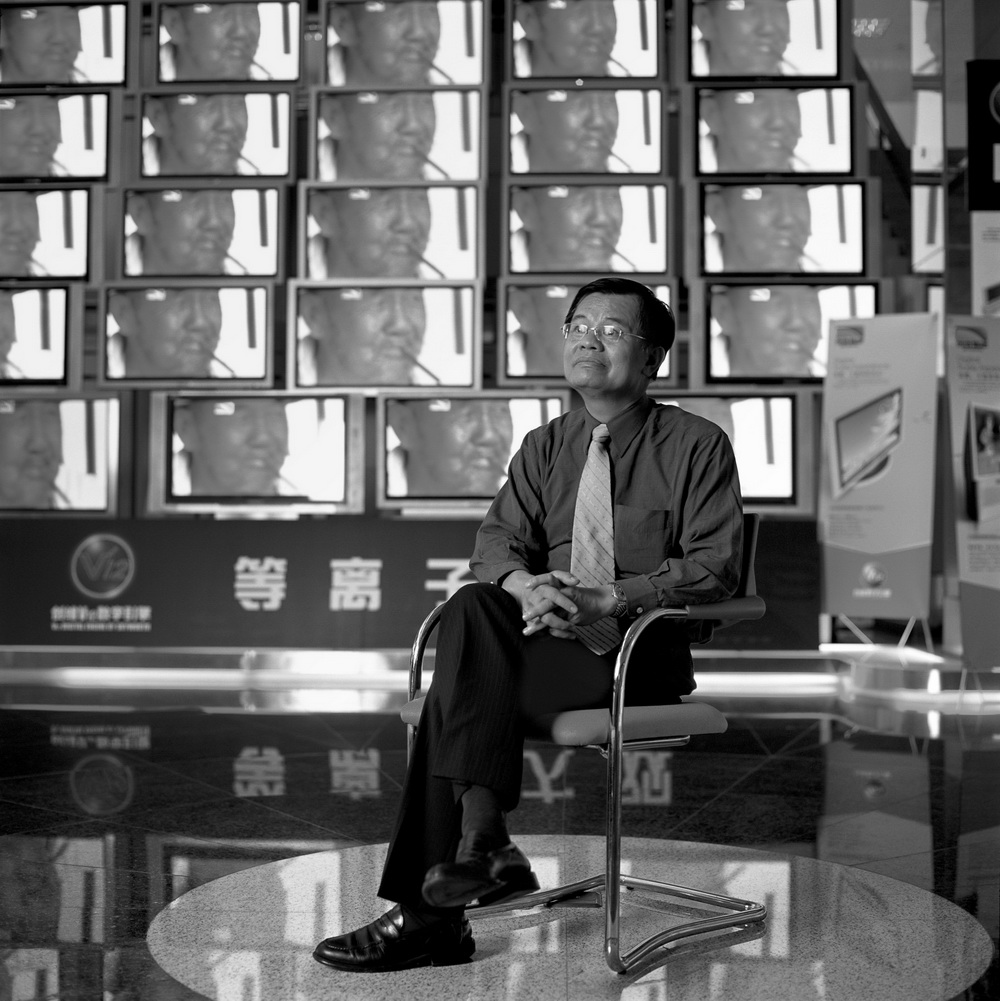

二十世纪末的中国摄影界,来自欧美的各类艺术思潮破门而入,各样的实验、探索、观念性的艺术创作蜂拥而起。1992年,一次被称作“首届全国探索杯摄影大赛”的活动在国内引起轰动,王凡以一组名为《灰色管道》的作品亮相中国摄影界即摘取大赛头奖。随即,《中国摄影》编辑部就此作品召开专题研讨会,并在首篇发表了研讨会内容及王凡的作品。一时间,《灰色管道》几乎成了当时国内探索摄影的一个标志乃,不仅对有现代主义特征摄影的研讨言必提及,而且有相当一批人在其引领下,开始追求对人与社会发展之间所产生的内在矛盾的认知与表现。王凡的其它作品也受到广泛关注,如《王府井》、组照《货场》和《模特》,都受到了理论家与摄影家的重视和热议。作品中表现出的人造物品的那种向人性入侵的感觉,精准而深刻地表现了现代人一种深深的隐忧。这种类人化形态反观了人性的异化,的确是一种聪明的选择。作品中不仅表现出的作者对人性与社会发展矛盾的敏感,而且那种不动声色的沉郁和深度思索后的内敛,也为其增加了强大的感染力。短短几年内发表的作品,使得当时的中国摄影界对王凡有更多、更高的期待,主流摄影媒体和摄影前辈甚至希望他成为当时中国摄影的领军人物。
而就在这时,王凡不见了。专业报刊、各类展览、摄影节、交流会,都见不到他的作品。他好像走失了,而且这一走就是将近十年。关注他的影友们揣度着:江郎才尽抑或兴趣转向?远游异国抑或工作缠身?
而就在大家的期待淡忘之时,2006年初,一幅《流水线上的打工妹》蓦然间就弄了个天翻地覆。先是“第二届中国国际新闻摄影大赛”的评委把王凡的同名系列作品中的一幅拣出来,参加经济及科技新闻类单幅的评奖,还给了个银奖。几天后,又被网友指出该作品并非2005年创作,不符合大赛规定被取消,弄得评委会公开向作者致歉。而后又出来个富豪台商的公子在网上贴出此照片,悬赏10万元寻找照片中的打工妹,很快就被指剽窃摄影家作品,一片指责。富公子辩解而连遭吐槽,一时间满城风雨。紧接着就是《流水线上的打工妹》受到众多经济学家的关注,高度赞扬作品对当时中国劳动力市场问题的揭示。直到2010年,《人民日报》刊文论及经济转型问题时,还在赞叹《流水线上的打工妹》“对中国经济现状的深刻洞察力”。《流水线上的打工妹》系列显然是王凡在摄影界的第二次亮相,与之同时面世的作品还有《老板系列》。两个大型专题,使得人们不得不重新打量这位曾以现代主义摄影名噪一时的青年摄影家。
1994年,王凡辞去原来的工作,从河南到了深圳,不久就成为《证券时报》的摄影记者。之后,《新财富》刊物创立,他即任首席摄影记者,后晋升为图片总监。在那个经济大潮席卷而来的年代,在那个改革开放最前沿的城市,在那个几乎处于风暴中心的中国财经记者的岗位上,王凡被裹挟着,为令人目不暇接的时代变革留下一帧帧影像。他意识到,自己再也无法沉浸于那种由描摹物质来表达对灵魂异化得精雕细刻之中了。而记录、洞察这场风驰电掣般的经济大变革,以影像的方式呈现其轨迹、揭示其内在的运行逻辑,对自己来说将是使命。
于是,他连续十年采访亚洲博鳌论坛,这在中国的财经记者中恐怕是绝无仅有的。他的镜头追逐那些企业界的领袖级人物和风云人物,同时也把镜头投向社会的最底层,投向发展大潮中的普通人。他采访比尔·盖茨、老布什,也采访打工族、吸毒女、老人院里的老人。他以优秀的沟通力走进被摄者的内心,成为他们的朋友,并以自己独到的观察能力把被摄者放到最具代表性的场景之中,让所有见到他这些作品的人感到震撼——那些由真实而鲜活的生命和实在而僵硬的场景组成的符号,有机地融汇成一种深刻的表述:我们每一个人都被裹挟在这个时代的潮流之中,每一个人都被同一双看不见的大手撺掇着、推搡着、摆弄着,走向未知的明天。
他说:在深入了解一位被采访者之后,在与他们一起走入那种最适合他们的场景中之后,自己往往会产生一种莫名的恐惧。显然,这种恐惧来自于摄影家独有的敏感,他察觉到了这些符号的组合背后所蕴含的强大而深刻的意义。他说正是这种恐惧使他产生拍摄的欲望,每次摘下镜头盖的时候都会有些轻微的颤抖,需要用深呼吸来平复一下才能继续精确到极致的聚焦。他的新作总是一经面世,就被有见地的社会经济学家作为论证的依据或者注脚,就这一点而言,王凡和他的作品在国内是唯一的。
当然,作为艺术审美对象的摄影作品,一定不只是能够成为经济学研究的论据才具有价值。当面对摄影作品时,获得美感的同时更为重要的,是其中蕴涵的情感或精神层面的东西。纪实摄影有着与一般艺术审美诸多不同的心理机制,它需要欣赏者在一定程度上了解被摄对象的相关信息。离开被摄对象的相关信息,仅从点线面和色彩中,是把握不到作品真正内涵的;没有正确的价值判断,自然难以开启正常的审美心理活动。作品中的信息就变成了一个或若干个具有社会学意义的符号。看到这种符号,我们能唤起自己的人生经验,为共鸣建立起一个坚实的心理基础。如果说王凡的《流水线上的打工妹》系列,用影像洞察了本世纪初的“中国制造”以廉价劳动力换取经济发展速度的现状,那么他近几年的《老人院》系列,就是用影像洞察了当代中国进入老龄化社会即将面临的严重问题,而《老板》系列则可说是对中国经济发展未来的展望,或者就是一种预言。
王凡以自己的职业优势,对所有列入自己拍摄名单的老板进行尽可能深入的了解和研究,并由此确定了《老板》系列的创作理念。在摄影家看来,每一位被摄对象都是平等的,都是一个独立的生命个体,所以,王凡总要把他们拉回到普通人的状态,抓取那种可亲可近,好玩好聊的神态,提高作品表现的生动性和欣赏者的认同感。同时,王凡更为注重的是表现出这些企业精英非同寻常的睿智、豁达、坚毅和干练。这两个方面对王凡来说真的是太重要了,因为他是要通过这样一个系列,表达对于中国未来经济发展的一个基本的判断。他要让所有看到作品的人,通过这些形象实现对未来的展望,让人们从被摄者的神态、目光、肢体上获得对国家经济发展的信心,由此展开艺术欣赏的联想与想象。为了这两方面的有机统一,他大胆采用介乎肖像照和生活照之间的影像关系和构成,让被摄者完全处于自我状态。同时避免场景中的任何象征、隐喻意味,最大限度地突出人物自身的性格特征,力求能够使之在与欣赏者的审美互动中得到升华。从他的《老板》系列的每一幅作品中,我们感受到了老板们: 激情与沉稳,练达与自信,睿智与坚强。这是他们的共性,也正是他们能够在经济大潮中勇立潮头共同原因。他们是称得起这个时代的财富创造者,他们的成功绝非偶然。
所以我常说不要轻易地把纪实摄影排斥在艺术的大门之外,优秀的纪实摄影作品都融入了作者大量的情感因素。摄影就是一种方式,如同文字一样,是思维和传播的工具。如果说中国当代纪实摄影是众多摄影家共同参与的一部视觉《史记》般的宏大叙事巨著,那么,王凡的这几个系列就是其中“财经本纪”的经典篇章。不仅以其准确、客观的纪实成为后世的人们了解研究我们这个时代的重要文本,而且也以强大的精神力量和精彩的情感表达成为广为流传的艺术精品。我坚信各界有识之士会给予这些作品更多的关注,因为,毕竟在三十多年的改革中,以摄影的方式洞察其运行轨迹并为挺立潮头的实业家留下珍贵影像的,王凡是唯一。
他还在路上,目光依然在前方收索。从他的《老板》系列的延展,
到即将面世的《老人院》系列,再到正在谋篇布局的记录当前经济转型期的各类人物,王凡努力继续背负着自己的使命前行。我们完全有理由对他寄予更高的期望,因为他是经济变革的记录者,而这变革还在进行,还在深入,以此,我们深信,王凡必将以独具的洞察力,在这篇记录我们时代的影像鸿篇巨作中,留下“财经本纪”里更具光精彩的篇章。
With the collision of western artistic ideologies, Chinese photography in the late twentieth-century witnessed the burgeoning of artistic experiments and explorations, and creation of conceptual art. In 1992, a photo contest called The First National Cup of Exploration caught nationwide attention. Wang Fan, with his group of works titled Grey Pipes, made his debut in the photography field in the contest and won first prize. Before long, the editorial department of Chinese Photography held a seminar around his works and covered this event in the first place. All of a sudden, Grey Pipes almost marked the exploration of photography in China at that time: it not only would be mentioned in seminars on contemporary photography, but also guided followers to study the contradictions caused between human and societal developments. Wang Fan’s other works, e.g. Wang Fujing, Warehouse series, and Model, also received widespread attention and discussion from theorists and photographers. His images could arouse the feeling of artifacts’ intrusion into humanity, accurately and deeply depicting the worries among modern people. It is smart to perceive alienation of humanity through such artifacts- his sensitivity of contradiction between humanity and societal developments is indicated, as well as the charms of his works are strengthened by the quietness and insightfulness. His works during those years raised the expectation from photography field in China, and mainstream photographic media and senior photographers even hope him to lead Chinese photography.
Nevertheless, Wang Fan disappeared- no one could find his photos on exhibitions, professional newspapers and periodicals, photographic festivals, or seminars. For almost ten years, he seemed like getting lost. During that period of time, people were wondering if he changed his interest or used up his talents, or traveled abroad or was occupied by work.
As people’s expectation fading out, however, a photograph titled Factory Girl Working on the Assembly Line started a snafu in early 2006. It began with the committee of the Second China International News Photo Contest, who picked out Wang Fan’s photo from a series of works sharing the same title, and awarded him a silver prize. Unfortunately, a few days later, users online pointed out that the photo was not taken in 2005, which was one of the contest’s requirements. As a result, the committee had to take out the photo and publicly apologized to Wang. The story was not finished. A Taiwanese business tycoon’s son published that photo online, claiming whoever found out that girl will be rewarded 100 thousand RMB. He was heavily criticized of plagiarizing Wang’s photo, and the more he defended for himself, the more accusations he got. Soon, the photo, Factory Girl Working on the Assembly Line, received highly praise from economists, for it revealed the problem of labor market in China at that time. Even until 2010, when the People’s Daily published article discussing the economic transformation issue, that photo was still used as an example of “insightful depiction of China’s economic condition”. Factory Girl Working on the Assembly Line, as well as The Boss Series, where Wang Fan’s second time appearing in the photography field. These two major-themed photographic works let people take a second look at this young photographer, who was famous for his modernism photography.
Wang Fan resigned from his job in 1994, went to Shenzhen from Henan and became the photographer for Securities Times. Before long, the magazine New Money was founded, and he became the chief photographer, and later got promoted to director of images. Being a financial reporter at the most forefront city in China in the era of economic reformation and open up, Wang was surrounded by the dazzling changes and made records of them. He realized that he could no longer be satisfied with the delicate expression of alienation through depicting substantial matters. For him, record and analyze this fast and deep economic reformation, as well as approaching its trajectory and revealing its inherent logic, will be a mission.
Consequently, Wang has interviewed Boao Forum for Asia for ten consecutive years, which would probably be the only one among the financial correspondents in China. His camera lens chases after the business leaders, as well as normal people and the bottom class in society. He interviewed Bill Gates and Bush, and he also interviewed the working class, female drug addicts, and the elderly in nursing homes. Having excellent communication skills, he walked into the subjects’ hearts, and became their friends; possessing insightful observance skills, he put them in the most representative scenes, making people feel shocked in front of his photos. Those symbols, made from vivid life and rigid scenes,organically integrate into profound stories: each of us is caught in this era’s tide, and we are all pushed by the same invisible hands to the unknown future.
After understanding the interviewees, said Wang Fan, he often has a sense of fear when walked into their most suitable scenes together with them. Apparently, this fear comes from the unique sensitivity of photographer- he perceived the powerful and deep meaning behind these symbols. It is this fear that motivates him to take photos. Every time when removing the lens cap, he trembles slightly, and need to deep breath to calm down before continuing to focus. His works are unparalleled in the sense that insightful socio-economists always use his new works as evidence and footnotes.
Without a doubt, photography as aesthetic object has its value other than becoming evidence of economic research. When faced with photographic works, while understanding the beauty is important, the inherent emotional and spiritual expressions are more essential. Documentary photography has different psychological mechanism with general aesthetics, and requires the viewer have certain degree of understanding to the subject matters: without relevant background information, one cannot grasp the true meaning if only start from points, lines, spaces, or colors; and without appropriate value judgments, it is hard to naturally begin aesthetics activities in mind. That being said, information in photographs becomes symbols with sociological meanings. Seeing these symbols, we can evoke our own life experience, building a psychological foundation for resonance. If Wang’s Factory Girl Working on the Assembly Line series depicted the issue of “made in China”- using cheap labor in exchange for economical development speed, his recent Nursing Home series indicated the upcoming problems brought from China entering aging society. We could say the Nursing Home series are prophecy of China’s future of economic development.
Utilizing his advantages as a correspondent, Wang conducted in-depth research of the bosses on his list, and from there he determined the idea of creating Boss series. From a photographer’s perspective, each subject is equally independent life. Therefore, he always tries to bring them back to the state of ordinary people, catching their amiable and interesting behaviors, in order to make photos more vivid and acceptable by viewers. At the same time, Wang paid more attention on showing these business leaders’ extraordinary wisdom and resolution. These two aspects are so important to him, because he wants to convey basic evaluation for the future of China’s economic development through this series- let viewers feel confidence from the subject’s expression, gaze, and gestures, and thus start to develop artistic appreciation and imagination. To unify these two aspects, he boldly blurred the image relationship and composition between portraits and everyday photos, making subjects stay as themselves. Meanwhile, he avoided any metaphoric meanings in the background, trying to maximize the subjects’ personal characteristics. From his Boss series, we could feel the bosses are passionate and calm, sophisticated and confident, as well as intelligent and strong. Such common qualities are the reason why they could stand firmly at the forefront of the economic tide. They are the creators of wealth in this era, and their success is no accident.
Do not exclude documentary photography from the art realm, because the outstanding ones have integrated substantial emotional factors of authors. Photography is a tool for conveying and spreading mind, same as words. If comparing contemporary documentary photography in China as a visually grand narrative masterpiece, like the Records of the Grand Historian, compiled by numerous photographers, then Wang Fan’s series are classical chapters on economics. His works not only provides accurate and objective records for future generations to understand our time, but also becomes widespread classics expressing spiritual power and wonderful emotions. I believe Wang’s works will receive more attention from various fields, as he is the only one using photography to observe the trajectory of some thirty-year reformation and keeping valuable photos for business leaders.
Wang Fan is still on his way, and his gaze continues exploring the future. From his Boss series to the upcoming Nursing House series, to the being conceived record of different figures during the economic transition period, Wang is striving to proceed with his mission. It is reasonable for us to have higher expectations for him, because he records the economic change, and the change is still in process. Hence, we firmly believe Wang Fan, with his unique insight, will come up with more fantastic chapters in the grand masterpiece recording our era.
1964年出生于河南,现为《新财富》杂志社摄影师。
展览:
2006年,摄影作品《老板系列》参加连州国际摄影节。
2006年,摄影作品《流水线上的打工妹》参加首届“吾城吾乡”摄影展。
2004年,摄影作品《流水年华》参加平遥国际摄影节。
1995年,摄影作品《工业场景》参加“95中原”摄影展。
获奖:
1992年,摄影作品《灰色管道》获《中国首届探索杯》摄影大赛银奖。
出版:
1993年,摄影作品《灰色管道》发表于《中国摄影》杂志。
1992年,摄影作品《灰色管道》发表于《现代摄影》杂志。
1991年,摄影作品《货场》发表于《摄影》杂志。
1990年,摄影作品《模特》发表于《现代摄影》杂志。
1989年,摄影作品《王府井》发表于《中国摄影家》杂志。
Wang Fan
Born in 1964 in Henan, currently is a photographer.at “The New Fortune” magazine
Exhibitions
2006 “The Boss” photography series, Lianzhou International Photography Festival
2006 “Female Migrant Workers on Factory Lines”, My City My Town Photography Exhibition
2004 “Lost Time”, Pingyao International Photography Festival
1995 “ Industrial Scene”, 1995: China Central Photography
Awards
1992 “Grey Pipes”, Silver Prize of the First China Exploration Cup Photography Exhibition
Publications
Publications
1993 “Grey Pipes”, Chinese Photography magazine
1992 “Grey Pipes”, Modern Photography magazine
1991 “Freight Yard”, Photography magazine
1990 “Models”, Modern Photography magazine
1989 “Wang Fu Jing”, Chinese Photographers magazine










当代中国影像的“财经本纪”
——王凡纪实摄影作品漫议
宋聚岭
二十世纪末的中国摄影界,来自欧美的各类艺术思潮破门而入,各样的实验、探索、观念性的艺术创作蜂拥而起。1992年,一次被称作“首届全国探索杯摄影大赛”的活动在国内引起轰动,王凡以一组名为《灰色管道》的作品亮相中国摄影界即摘取大赛头奖。随即,《中国摄影》编辑部就此作品召开专题研讨会,并在首篇发表了研讨会内容及王凡的作品。一时间,《灰色管道》几乎成了当时国内探索摄影的一个标志乃,不仅对有现代主义特征摄影的研讨言必提及,而且有相当一批人在其引领下,开始追求对人与社会发展之间所产生的内在矛盾的认知与表现。王凡的其它作品也受到广泛关注,如《王府井》、组照《货场》和《模特》,都受到了理论家与摄影家的重视和热议。作品中表现出的人造物品的那种向人性入侵的感觉,精准而深刻地表现了现代人一种深深的隐忧。这种类人化形态反观了人性的异化,的确是一种聪明的选择。作品中不仅表现出的作者对人性与社会发展矛盾的敏感,而且那种不动声色的沉郁和深度思索后的内敛,也为其增加了强大的感染力。短短几年内发表的作品,使得当时的中国摄影界对王凡有更多、更高的期待,主流摄影媒体和摄影前辈甚至希望他成为当时中国摄影的领军人物。
而就在这时,王凡不见了。专业报刊、各类展览、摄影节、交流会,都见不到他的作品。他好像走失了,而且这一走就是将近十年。关注他的影友们揣度着:江郎才尽抑或兴趣转向?远游异国抑或工作缠身?
而就在大家的期待淡忘之时,2006年初,一幅《流水线上的打工妹》蓦然间就弄了个天翻地覆。先是“第二届中国国际新闻摄影大赛”的评委把王凡的同名系列作品中的一幅拣出来,参加经济及科技新闻类单幅的评奖,还给了个银奖。几天后,又被网友指出该作品并非2005年创作,不符合大赛规定被取消,弄得评委会公开向作者致歉。而后又出来个富豪台商的公子在网上贴出此照片,悬赏10万元寻找照片中的打工妹,很快就被指剽窃摄影家作品,一片指责。富公子辩解而连遭吐槽,一时间满城风雨。紧接着就是《流水线上的打工妹》受到众多经济学家的关注,高度赞扬作品对当时中国劳动力市场问题的揭示。直到2010年,《人民日报》刊文论及经济转型问题时,还在赞叹《流水线上的打工妹》“对中国经济现状的深刻洞察力”。《流水线上的打工妹》系列显然是王凡在摄影界的第二次亮相,与之同时面世的作品还有《老板系列》。两个大型专题,使得人们不得不重新打量这位曾以现代主义摄影名噪一时的青年摄影家。
1994年,王凡辞去原来的工作,从河南到了深圳,不久就成为《证券时报》的摄影记者。之后,《新财富》刊物创立,他即任首席摄影记者,后晋升为图片总监。在那个经济大潮席卷而来的年代,在那个改革开放最前沿的城市,在那个几乎处于风暴中心的中国财经记者的岗位上,王凡被裹挟着,为令人目不暇接的时代变革留下一帧帧影像。他意识到,自己再也无法沉浸于那种由描摹物质来表达对灵魂异化得精雕细刻之中了。而记录、洞察这场风驰电掣般的经济大变革,以影像的方式呈现其轨迹、揭示其内在的运行逻辑,对自己来说将是使命。
于是,他连续十年采访亚洲博鳌论坛,这在中国的财经记者中恐怕是绝无仅有的。他的镜头追逐那些企业界的领袖级人物和风云人物,同时也把镜头投向社会的最底层,投向发展大潮中的普通人。他采访比尔·盖茨、老布什,也采访打工族、吸毒女、老人院里的老人。他以优秀的沟通力走进被摄者的内心,成为他们的朋友,并以自己独到的观察能力把被摄者放到最具代表性的场景之中,让所有见到他这些作品的人感到震撼——那些由真实而鲜活的生命和实在而僵硬的场景组成的符号,有机地融汇成一种深刻的表述:我们每一个人都被裹挟在这个时代的潮流之中,每一个人都被同一双看不见的大手撺掇着、推搡着、摆弄着,走向未知的明天。
他说:在深入了解一位被采访者之后,在与他们一起走入那种最适合他们的场景中之后,自己往往会产生一种莫名的恐惧。显然,这种恐惧来自于摄影家独有的敏感,他察觉到了这些符号的组合背后所蕴含的强大而深刻的意义。他说正是这种恐惧使他产生拍摄的欲望,每次摘下镜头盖的时候都会有些轻微的颤抖,需要用深呼吸来平复一下才能继续精确到极致的聚焦。他的新作总是一经面世,就被有见地的社会经济学家作为论证的依据或者注脚,就这一点而言,王凡和他的作品在国内是唯一的。
当然,作为艺术审美对象的摄影作品,一定不只是能够成为经济学研究的论据才具有价值。当面对摄影作品时,获得美感的同时更为重要的,是其中蕴涵的情感或精神层面的东西。纪实摄影有着与一般艺术审美诸多不同的心理机制,它需要欣赏者在一定程度上了解被摄对象的相关信息。离开被摄对象的相关信息,仅从点线面和色彩中,是把握不到作品真正内涵的;没有正确的价值判断,自然难以开启正常的审美心理活动。作品中的信息就变成了一个或若干个具有社会学意义的符号。看到这种符号,我们能唤起自己的人生经验,为共鸣建立起一个坚实的心理基础。如果说王凡的《流水线上的打工妹》系列,用影像洞察了本世纪初的“中国制造”以廉价劳动力换取经济发展速度的现状,那么他近几年的《老人院》系列,就是用影像洞察了当代中国进入老龄化社会即将面临的严重问题,而《老板》系列则可说是对中国经济发展未来的展望,或者就是一种预言。
王凡以自己的职业优势,对所有列入自己拍摄名单的老板进行尽可能深入的了解和研究,并由此确定了《老板》系列的创作理念。在摄影家看来,每一位被摄对象都是平等的,都是一个独立的生命个体,所以,王凡总要把他们拉回到普通人的状态,抓取那种可亲可近,好玩好聊的神态,提高作品表现的生动性和欣赏者的认同感。同时,王凡更为注重的是表现出这些企业精英非同寻常的睿智、豁达、坚毅和干练。这两个方面对王凡来说真的是太重要了,因为他是要通过这样一个系列,表达对于中国未来经济发展的一个基本的判断。他要让所有看到作品的人,通过这些形象实现对未来的展望,让人们从被摄者的神态、目光、肢体上获得对国家经济发展的信心,由此展开艺术欣赏的联想与想象。为了这两方面的有机统一,他大胆采用介乎肖像照和生活照之间的影像关系和构成,让被摄者完全处于自我状态。同时避免场景中的任何象征、隐喻意味,最大限度地突出人物自身的性格特征,力求能够使之在与欣赏者的审美互动中得到升华。从他的《老板》系列的每一幅作品中,我们感受到了老板们: 激情与沉稳,练达与自信,睿智与坚强。这是他们的共性,也正是他们能够在经济大潮中勇立潮头共同原因。他们是称得起这个时代的财富创造者,他们的成功绝非偶然。
所以我常说不要轻易地把纪实摄影排斥在艺术的大门之外,优秀的纪实摄影作品都融入了作者大量的情感因素。摄影就是一种方式,如同文字一样,是思维和传播的工具。如果说中国当代纪实摄影是众多摄影家共同参与的一部视觉《史记》般的宏大叙事巨著,那么,王凡的这几个系列就是其中“财经本纪”的经典篇章。不仅以其准确、客观的纪实成为后世的人们了解研究我们这个时代的重要文本,而且也以强大的精神力量和精彩的情感表达成为广为流传的艺术精品。我坚信各界有识之士会给予这些作品更多的关注,因为,毕竟在三十多年的改革中,以摄影的方式洞察其运行轨迹并为挺立潮头的实业家留下珍贵影像的,王凡是唯一。
他还在路上,目光依然在前方收索。从他的《老板》系列的延展,
到即将面世的《老人院》系列,再到正在谋篇布局的记录当前经济转型期的各类人物,王凡努力继续背负着自己的使命前行。我们完全有理由对他寄予更高的期望,因为他是经济变革的记录者,而这变革还在进行,还在深入,以此,我们深信,王凡必将以独具的洞察力,在这篇记录我们时代的影像鸿篇巨作中,留下“财经本纪”里更具光精彩的篇章。
2015年6月20日于郑州
“Financial Memoir” of Contemporary Chinese Photography
-- Thoughts on Wang Fan’s Documentary Photography
Song Juling
With the collision of western artistic ideologies, Chinese photography in the late twentieth-century witnessed the burgeoning of artistic experiments and explorations, and creation of conceptual art. In 1992, a photo contest called The First National Cup of Exploration caught nationwide attention. Wang Fan, with his group of works titled Grey Pipes, made his debut in the photography field in the contest and won first prize. Before long, the editorial department of Chinese Photography held a seminar around his works and covered this event in the first place. All of a sudden, Grey Pipes almost marked the exploration of photography in China at that time: it not only would be mentioned in seminars on contemporary photography, but also guided followers to study the contradictions caused between human and societal developments. Wang Fan’s other works, e.g. Wang Fujing, Warehouse series, and Model, also received widespread attention and discussion from theorists and photographers. His images could arouse the feeling of artifacts’ intrusion into humanity, accurately and deeply depicting the worries among modern people. It is smart to perceive alienation of humanity through such artifacts- his sensitivity of contradiction between humanity and societal developments is indicated, as well as the charms of his works are strengthened by the quietness and insightfulness. His works during those years raised the expectation from photography field in China, and mainstream photographic media and senior photographers even hope him to lead Chinese photography.
Nevertheless, Wang Fan disappeared- no one could find his photos on exhibitions, professional newspapers and periodicals, photographic festivals, or seminars. For almost ten years, he seemed like getting lost. During that period of time, people were wondering if he changed his interest or used up his talents, or traveled abroad or was occupied by work.
As people’s expectation fading out, however, a photograph titled Factory Girl Working on the Assembly Line started a snafu in early 2006. It began with the committee of the Second China International News Photo Contest, who picked out Wang Fan’s photo from a series of works sharing the same title, and awarded him a silver prize. Unfortunately, a few days later, users online pointed out that the photo was not taken in 2005, which was one of the contest’s requirements. As a result, the committee had to take out the photo and publicly apologized to Wang. The story was not finished. A Taiwanese business tycoon’s son published that photo online, claiming whoever found out that girl will be rewarded 100 thousand RMB. He was heavily criticized of plagiarizing Wang’s photo, and the more he defended for himself, the more accusations he got. Soon, the photo, Factory Girl Working on the Assembly Line, received highly praise from economists, for it revealed the problem of labor market in China at that time. Even until 2010, when the People’s Daily published article discussing the economic transformation issue, that photo was still used as an example of “insightful depiction of China’s economic condition”. Factory Girl Working on the Assembly Line, as well as The Boss Series, where Wang Fan’s second time appearing in the photography field. These two major-themed photographic works let people take a second look at this young photographer, who was famous for his modernism photography.
Wang Fan resigned from his job in 1994, went to Shenzhen from Henan and became the photographer for Securities Times. Before long, the magazine New Money was founded, and he became the chief photographer, and later got promoted to director of images. Being a financial reporter at the most forefront city in China in the era of economic reformation and open up, Wang was surrounded by the dazzling changes and made records of them. He realized that he could no longer be satisfied with the delicate expression of alienation through depicting substantial matters. For him, record and analyze this fast and deep economic reformation, as well as approaching its trajectory and revealing its inherent logic, will be a mission.
Consequently, Wang has interviewed Boao Forum for Asia for ten consecutive years, which would probably be the only one among the financial correspondents in China. His camera lens chases after the business leaders, as well as normal people and the bottom class in society. He interviewed Bill Gates and Bush, and he also interviewed the working class, female drug addicts, and the elderly in nursing homes. Having excellent communication skills, he walked into the subjects’ hearts, and became their friends; possessing insightful observance skills, he put them in the most representative scenes, making people feel shocked in front of his photos. Those symbols, made from vivid life and rigid scenes,organically integrate into profound stories: each of us is caught in this era’s tide, and we are all pushed by the same invisible hands to the unknown future.
After understanding the interviewees, said Wang Fan, he often has a sense of fear when walked into their most suitable scenes together with them. Apparently, this fear comes from the unique sensitivity of photographer- he perceived the powerful and deep meaning behind these symbols. It is this fear that motivates him to take photos. Every time when removing the lens cap, he trembles slightly, and need to deep breath to calm down before continuing to focus. His works are unparalleled in the sense that insightful socio-economists always use his new works as evidence and footnotes.
Without a doubt, photography as aesthetic object has its value other than becoming evidence of economic research. When faced with photographic works, while understanding the beauty is important, the inherent emotional and spiritual expressions are more essential. Documentary photography has different psychological mechanism with general aesthetics, and requires the viewer have certain degree of understanding to the subject matters: without relevant background information, one cannot grasp the true meaning if only start from points, lines, spaces, or colors; and without appropriate value judgments, it is hard to naturally begin aesthetics activities in mind. That being said, information in photographs becomes symbols with sociological meanings. Seeing these symbols, we can evoke our own life experience, building a psychological foundation for resonance. If Wang’s Factory Girl Working on the Assembly Line series depicted the issue of “made in China”- using cheap labor in exchange for economical development speed, his recent Nursing Home series indicated the upcoming problems brought from China entering aging society. We could say the Nursing Home series are prophecy of China’s future of economic development.
Utilizing his advantages as a correspondent, Wang conducted in-depth research of the bosses on his list, and from there he determined the idea of creating Boss series. From a photographer’s perspective, each subject is equally independent life. Therefore, he always tries to bring them back to the state of ordinary people, catching their amiable and interesting behaviors, in order to make photos more vivid and acceptable by viewers. At the same time, Wang paid more attention on showing these business leaders’ extraordinary wisdom and resolution. These two aspects are so important to him, because he wants to convey basic evaluation for the future of China’s economic development through this series- let viewers feel confidence from the subject’s expression, gaze, and gestures, and thus start to develop artistic appreciation and imagination. To unify these two aspects, he boldly blurred the image relationship and composition between portraits and everyday photos, making subjects stay as themselves. Meanwhile, he avoided any metaphoric meanings in the background, trying to maximize the subjects’ personal characteristics. From his Boss series, we could feel the bosses are passionate and calm, sophisticated and confident, as well as intelligent and strong. Such common qualities are the reason why they could stand firmly at the forefront of the economic tide. They are the creators of wealth in this era, and their success is no accident.
Do not exclude documentary photography from the art realm, because the outstanding ones have integrated substantial emotional factors of authors. Photography is a tool for conveying and spreading mind, same as words. If comparing contemporary documentary photography in China as a visually grand narrative masterpiece, like the Records of the Grand Historian, compiled by numerous photographers, then Wang Fan’s series are classical chapters on economics. His works not only provides accurate and objective records for future generations to understand our time, but also becomes widespread classics expressing spiritual power and wonderful emotions. I believe Wang’s works will receive more attention from various fields, as he is the only one using photography to observe the trajectory of some thirty-year reformation and keeping valuable photos for business leaders.
Wang Fan is still on his way, and his gaze continues exploring the future. From his Boss series to the upcoming Nursing House series, to the being conceived record of different figures during the economic transition period, Wang is striving to proceed with his mission. It is reasonable for us to have higher expectations for him, because he records the economic change, and the change is still in process. Hence, we firmly believe Wang Fan, with his unique insight, will come up with more fantastic chapters in the grand masterpiece recording our era.
06/20/2015 Written in Zhengzhou


 豫公网安备 41019602002106号
豫公网安备 41019602002106号